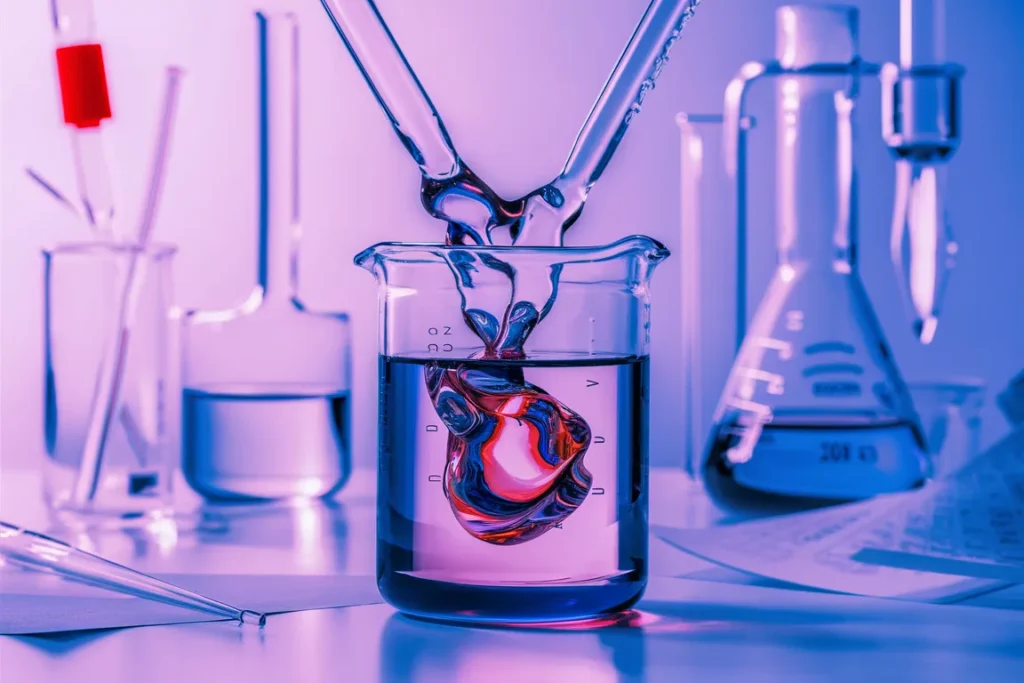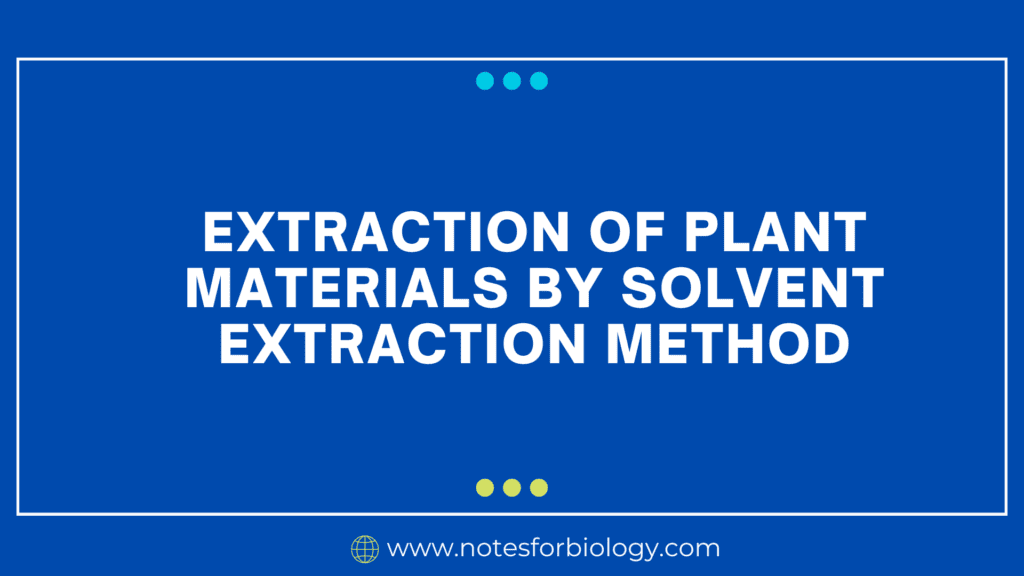Extraction of plant materials is the process of isolating and recovering desired chemicals or substances from plant matter. Solvents, supercritical fluids, or other technologies are used to dissolve and extract bioactive substances from various sections of plants, including leaves, roots, stems, bark, seeds, and flowers. The extracted compounds may contain phytochemicals, essential oils, pigments, tastes, scents, and other important substances used in medicinal, nutraceutical, cosmetic, or food applications. Extraction methods vary depending on the plant material and target components, and may include solvent extraction, steam distillation, supercritical fluid extraction, and pressured liquid extraction. Following extraction, the resultant extract is usually further processed to concentrate, purify, and analyze the target components for various
Table of Contents
Define Extraction of plant materials
Extraction of plant materials is a process used to isolate and recover valuable compounds from different parts of plants, such as leaves, roots, stems, bark, seeds, or flowers. This is achieved by using various techniques, including solvent extraction, steam distillation, supercritical fluid extraction, and pressurized liquid extraction. The aim is to dissolve and extract bioactive substances like phytochemicals, essential oils, pigments, flavors, and fragrances, which can be used in pharmaceuticals, nutraceuticals, cosmetics, and food industries. The extraction process typically involves preparing the plant material, selecting an appropriate method and solvent, performing the extraction, and then processing the extract to concentrate, purify, and analyze the desired compounds.

Materials Needed in Extraction of plant materials
- Plant substance (dry or fresh)
- Solvent (e.g., ethanol, methanol, hexane, acetone, water, or a combination these)
- Grinder or mortar and pestle.
- Extraction container (e.g., flask or beaker)
- Filtration equipment (filter paper, funnel, or vacuum filtration system)
- A rotary evaporator or a simple setup for solvent evaporation (such as a hot water bath)
- Protective gear (gloves, goggles, lab coat)

Steps for Solvent Extraction
1. Preparation of Plant Materials
- Harvest and Dry: Gather the plant material. When using new material, it is usually best to dry it first to reduce water content, which can interfere with solvent extraction.
- Grinding: To enhance the surface area available for extraction, finely grind the dried plant material. This can be accomplished with a grinder or mortar and pestle.
2. Choosing a solvent:
The type of the target chemicals determines the solvent to use. For example, non-polar solvents such as hexane are appropriate for extracting non-polar chemicals such as oils and fats, whereas polar solvents such as ethanol are appropriate for extracting polar molecules such as flavonoids and alkaloids.
3. Extraction Process:
Mixing: Transfer the ground plant material to an extraction container and add the solvent. The solvent-to-plant material ratio normally runs between 5:1 and 10:1 (v/w).
Agitation: Stir or shake the mixture to help the extraction process. This can be done manually or using a motorized shaker.
Incubation: Allow the mixture to settle for a specific amount of time, which can range from a few hours to many days depending on the plant material and substances being extracted. This can be done at room temperature or with low heat to improve extraction efficiency.
4. Filtration:
After the extraction is complete, filter the mixture to separate the solid plant material from the solvent containing the recovered chemicals. This can be accomplished with filter paper and a funnel or a vacuum filtering system.
5. Solvent Removal:
To concentrate the extract, the solvent is vaporized. This can be accomplished with a rotating evaporator, which is efficient and gentle on the compounds. A basic arrangement with a hot water bath can also be used to evaporate the solvent, but this is less efficient and may harm heat-sensitive substances.
6. Collection of extracts:
The crude extract containing the desired components is what remains after the solvent is evaporated. This can be further purified if needed using various chromatographic processes.
Safety Considerations
- Wear suitable safety equipment.
- When working with volatile or dangerous solvents, keep the space well ventilated or use a fume hood.
- Dispose of solvents and plant wastes in accordance with local rules.
Example of Solvent Extraction:

Preparation:
- Harvest and dry the lavender flowers.
- Grind the dried flowers to a fine powder.
Extraction:
- Put the powdered lavender in a flask.
- Add ethanol to the flask at a 10:1 solvent-to-plant ratio.
- Stir the mixture and let it aside for 48 hours at room temperature.
Filtration:
- Filter the mixture to remove any solid plant material.
Solvent Removal:
- Use a rotary evaporator to remove the ethanol, leaving only the essential oil extract.
Collection:
- Collect a pure essential oil extract.
Frequently Asked Question(FAQ)
Define Extraction of plant materials
Extraction of plant materials is a process used to isolate and recover valuable compounds from different parts of plants, such as leaves, roots, stems, bark, seeds, or flowers. This is achieved by using various techniques, including solvent extraction, steam distillation, supercritical fluid extraction, and pressurized liquid extraction.
What are the materials needed extraction of plant materials ?
The materials needed extraction of plant materials are:
1. Plant substance (dry or fresh)
2. Solvent (e.g., ethanol, methanol, hexane, acetone, water, or a combination of these)
3. Grinder or mortar and pestle.
4. Extraction container (e.g., flask or beaker)
5. Filtration equipment (filter paper, funnel, or vacuum filtration system)
6. A rotary evaporator or a simple setup for solvent evaporation (such as a hot water bath)
7. Protective gear (gloves, goggles, lab coat)
Related Article
Butyrate Disk Test- Principle, Procedure, Results, Uses, Limitations

